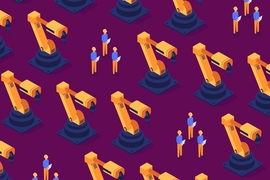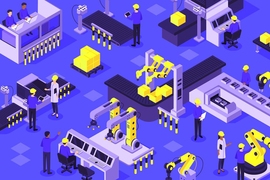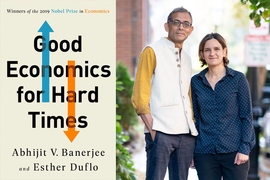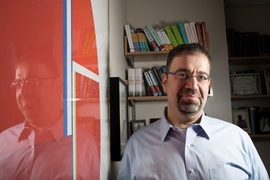As part of the MIT Task Force on the Work of the Future’s new series of subject-specific research briefs by MIT faculty, Institute Professor Daron Acemoglu teamed with economics PhD student Andrea Manera and Boston University Assistant Professor Pascual Restrepo to examine the different forms of automation and examine how the U.S. tax system has led to excessive reliance on machines.
In their brief, “Taxes, Automation, and the Future of Labor,” Acemoglu and co-authors explain how the tax system evolved to favor capital relative to labor, and what U.S. policymakers could do to reverse this negative impact and level the playing field between the two. The brief argues that while lower taxes on capital is a long-standing feature of the U.S. tax code, the issue now is more acute as new automation technologies move into a larger variety of worker tasks performed throughout the economy, from warehouses to factories to insurance firms and stores. Automation, which involves the substitution of machines and algorithms for tasks previously performed by workers, could be an engine of growth. But when it is excessive, for example driven by tax incentives rather than for efficiency gains, it harms labor and fails to improve productivity. Here, Acemoglu provides an overview of the brief's findings.
Q: Your brief describes how the U.S. tax system has historically favored investments in physical capital vs. human labor. Can you explain?
A: In the 1980s and 1990s, the effective tax on labor was 25 percent. This means that, due to federal and state income taxes and payroll taxes, if an employer wanted to pay out $100 in a worker's pocket, this would cost them $125. Even at that time, capital was taxed much more lightly. The average tax rate on equipment and software capital, the types of capital involved in automation, was around 15 percent during these two decades. Since then, the effective tax rate on labor has remained around 25 percent, while taxes on capital have declined. We now tax equipment and software at about 5 percent. This decline is partly because of the lower income taxes on people with capital income, partly because many businesses have shifted their status from “C corporation” to “S corporation,” and even more majorly, because since 2000, the U.S. government has given very generous depreciation allowances, enabling firms to reduce capital expenditures from their tax obligations.
Q: What are the implications of this imbalance for workers, wages, and broader societal issues such as inequality?
A: Because of our tax system, firms have an artificial reason for preferring machines, and specifically automation, to employing labor. Suppose that you can perform a crucial task by hiring 10 workers and paying them $95,000 a year and they would do an excellent job. Hence, employing labor for this task would cost you $950,000. Now imagine there is a specialized software that costs $1 million a year which also performs the same task satisfactorily. There should be no reason for you to use this software, since it is no better and costs a little more. But with the current tax system, you pay much higher taxes when you hire labor than when you go for the software. Therefore, it is now more profitable to use the software. It is probable that many firms are thus being induced to reduce their labor demand and use machines instead because of the U.S. tax code. This implies lower labor demand and thus greater inequality between capital and labor. Moreover, since the types of workers that are laid off because of machine or algorithmic replacement are typically low-skill, the bias of the tax code also fuels inequality.
Q: What are your recommendations for how U.S. policymakers can better level the playing field between investments in capital vs. human labor?
A: If we go back to the tax structure in the 1990s, we would still be treating capital more favorably than labor, but it would be a huge step towards leveling the playing field. It would also help raise tax revenues, which are sorely needed at the moment. I would also like to see payroll taxes reduced, but at a time of mounting budget deficits and public debt, this is less likely to be adopted.











